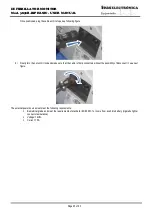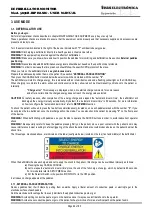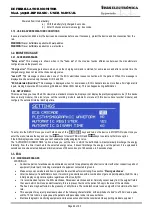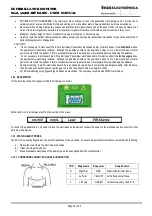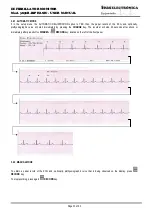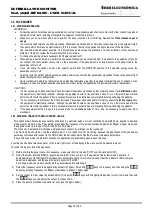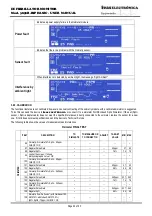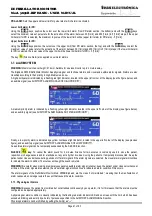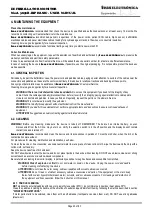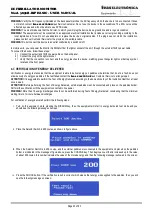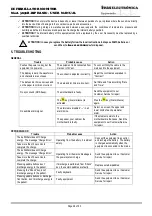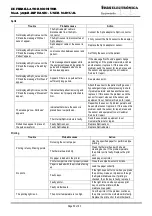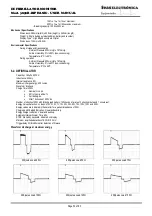
DEFIBRILLATOR MONITOR
Mod. 3850B-BIPHASIC - USER MANUAL
Page 37 of 63
•
Be careful when making a temporary suspension audible alarm signal (silence), keep the patient under close surveillance at all
times. If the alarm signals are selected, the visual alarm signal will continue to indicate an alarm condition if this occurs.
•
Carefully route the patient cables, extension cables, oximetry sensors and/or pacemaker electrodes to reduce the possibility of
patient entanglement or strangulation.
CAUTIONS
•
Only use the Oximetry
sensor provided with the equipment or those specially indicated for this equipment.
•
The user is responsible for ensuring compatibility between the sensor, extension cable and this equipment.
•
It is not necessary to disconnect the ECG electrodes, Pacemaker electrodes and/or Oximetry sensor for defibrillation since
the equipment is electrically isolated; although the paddles should not be positioned close to or on the electrodes or metal
parts in contact with the patient, if this is not possible remove the electrodes or metal parts before positioning the paddles.
•
It is not necessary to disconnect the ECG electrodes, Pacemaker electrodes and/or Oximetry sensor for electrosurgery since
the equipment is electrically isolated; although the paddles should not be positioned close to or on the electrodes or metal
parts in contact with the patient, if this is not possible remove the electrodes or metal parts before positioning the paddles.
•
When placing the Oximetry sensor “Y” with tape does not stretch or tighten it. If the tape is too tight can cause inaccurate
readings and blisters on the skin of the patient (the blisters are caused by lack of skin breath, not by heat).
•
Replace the Oximetry sensor every 2 hours to allow the patient’s skin to breathe.
•
The operation of the Oximeter can be affected by the presence of Computed Tomography equipment.
•
In the presence of strong electromagnetic fields, the reading of SpO
2
may not be stable, displaying different values in every
second. The device reading will stabilize after the interference ceases or when the device moves away from the emission
source.
•
The maximum time of application of the Oximetry sensor is indicated in its own manual.
•
The specific use of the Oximetry sensor concerning: the patient population (e.g. age, weight), body part or tissue type to which
it applies and application (e.g. environment, frequency of use, anatomical place, mobility) is indicated in its own manual.
•
Be sure to know where and how to position the Oximetry sensor. Refer to the user manual that accompanies the sensor.
3.6.2. OXIMETER CONNECTION
If your device has an oximeter, in the middle of the front panel will find the following connector:
In the top of front panel, will find the menu section:
To connect the oximeter, only need to place the sensor on finger’s patient and connect the sensor to the device. You also have to select
the patient type between adult and neonatal.
3.6.3. PATIENT SELECTION
To do this scroll with
keys to the patient sector and select the appropriate option with
keys: Adult or Neonate.
3.6.4. WARNING MESSAGES FROM THE OXIMETER
Without sensor
This message will be displayed while the Oximetry sensor is not plugged to the device.



